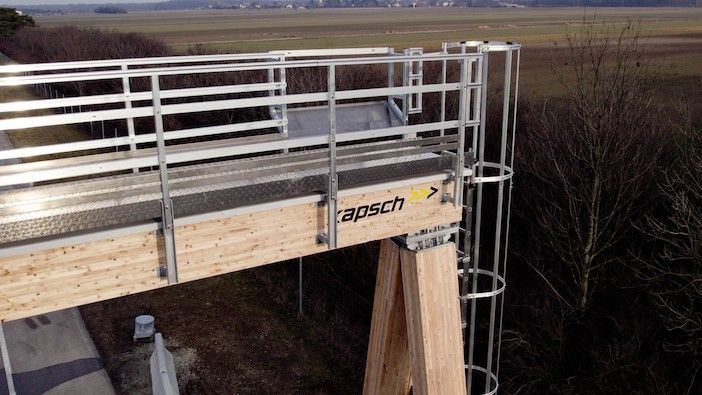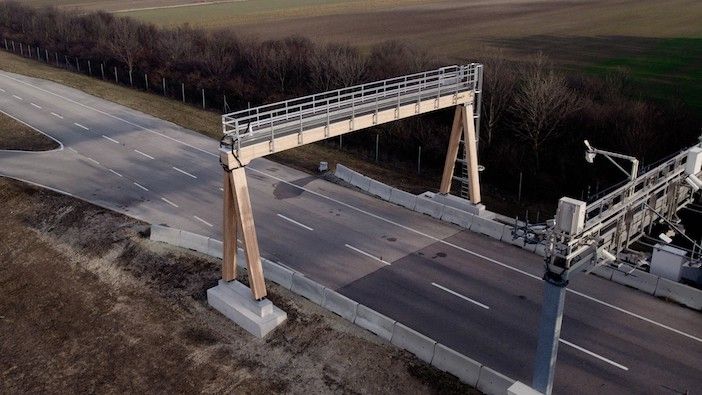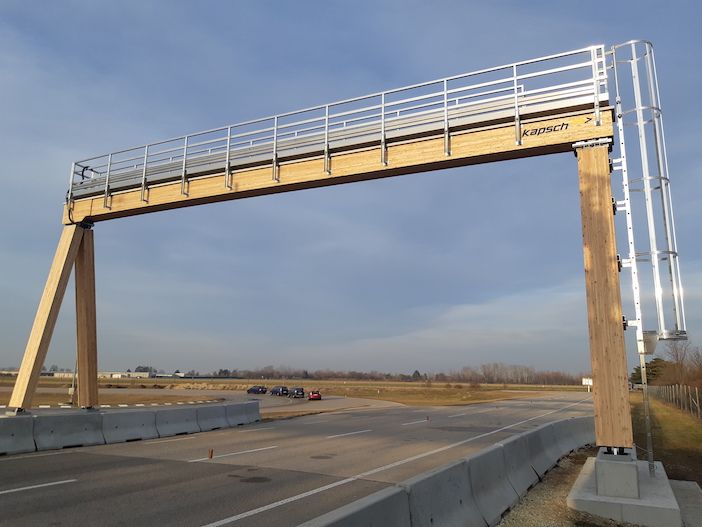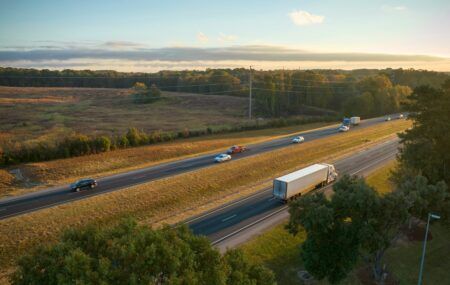In an effort to reduce the negative impact of steel on the environment Kapsch TrafficCom is launching the Green Gantry, an alternative hybrid design based on wood instead of metal that can reduce metal consumption to a minimum.
The Kapsch TrafficCom test track in Teesdorf (Lower Austria) is now home to the first Green Gantry, which sets new standards for sustainable infrastructure.

The Green Gantry is comparable in quality and cost to a conventional gantry. Since wood has up to a twenty-fold lower CO2 footprint compared to steel, the environmental impact is reduced with the Green Gantry compared to conventional gantries. Even when dismantling the gantry, it does not pollute the environment as no harmful chemical substances are used to treat the wood. In addition to its environmental benefits, the Green Gantry also meets all relevant European norms and standards and features a lifespan of over 20 years.
To bring the Green Gantry to life, Kapsch TrafficCom initiated a research project that is funded by the Waldfonds, an initiative of the Austrian Federal Ministry of Agriculture, Forestry, Regions and Water Management and is carried out as part of the Think.Wood programme of the Austrian Wood initiative. The research project is led by the Institute of Timber Engineering and Wood Technology at Graz University of Technology.

Other research and development partners include laminated timber specialist Hasslacher Norica Timber and traffic infrastructure provider Forster. The design of the Green Gantry was developed together with the civil engineering firm Freiraum ZT, which also calculated the structural framework.
Over the next two years, the specifications and characteristics of the Green Gantry will be monitored at the site in Teesdorf as part of the project in order to ensure impeccable quality performance in the future.





